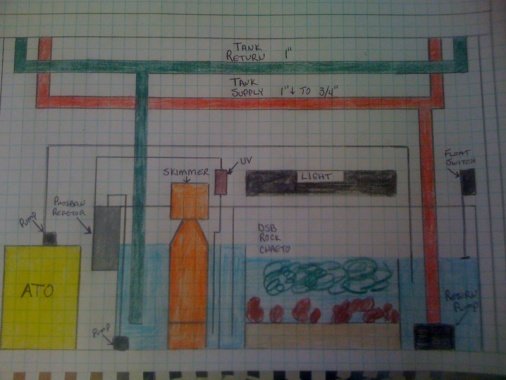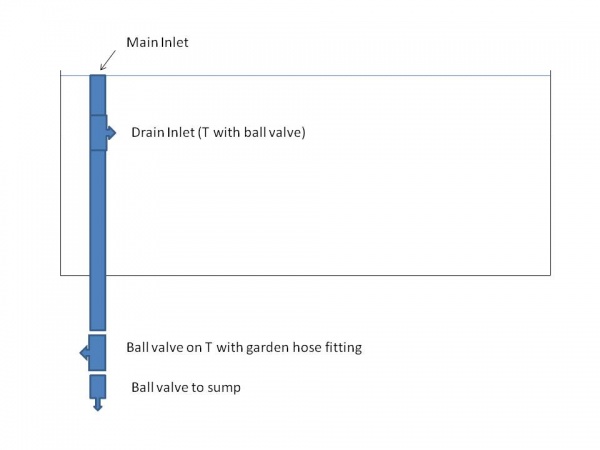how would that water drain? it would have to go over the back rim. you would need to start a siphon. you would have to put your hand inside the tank, turn the valve, then shut off the pump so that a siphon is created. you are going to want a drill hole just under the water line on the return so it breaks siphon in the event of an outage, so there is another obstacle.
IMO, much more work than conventional methods.
if anything, i would attach another tank to the sump with a valve. you could close that valve, drain and fill that tank, then open it back up.
no matter what, you are going to want to blow off the rocks and do other cleaning inside the DT.


